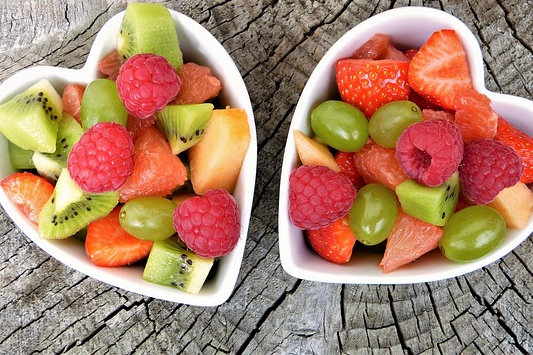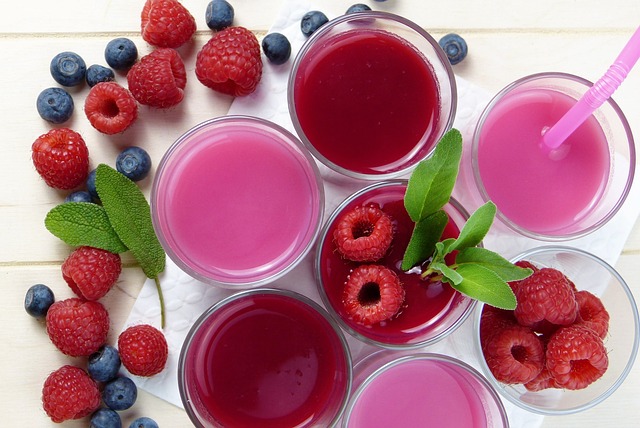Eating fruits and vegetables isn’t just about checking off boxes on your daily nutrient intake list; it’s an invitation to savor the variety that nature has to offer. And when it comes to maximizing the health benefits of fruits and vegetables, color is key. This comprehensive guide reveals the secrets of incorporating a colorful array of fruits and veggies into your life, and why doing so could be your most delicious health hack yet.
Why Should You Care About the Color of Your Fruits and Veggies?
A multicolored plate is more than just a feast for the eyes; it’s a powerhouse of nutrition. Eating a range of colorful fruits and vegetables increases the likelihood of obtaining a wider range of essential nutrients, which in turn can potentially reduce the risk of chronic illnesses like cancer. Additionally, fruits and vegetables are naturally low in fat and calories, but high in essential vitamins, minerals, and fiber, making them vital elements for a balanced diet.
Fact Alert: Phytonutrients Unleashed
Did you know that the color of fruits and vegetables is an indication of their phytonutrients? These natural compounds have antioxidant, anti-inflammatory, and cell-protective qualities.
What’s the Deal With the 5-A-Day Rule?
You’ve likely heard of the “5 A Day for Better Health” program, but what does it truly entail? This initiative emphasizes the importance of consuming at least five servings of fruits and vegetables each day. While five servings are the recommended minimum, the more variety and color you add to your daily intake, the better!
Crunching Numbers: Portions Made Easy
A portion generally means a cup, but it can vary depending on the fruit or vegetable. For instance, a medium-sized apple counts as one cup, while 12 baby carrots also make up a cup.

The Color Spectrum: Why You Need the Whole Rainbow
When it comes to fruits and vegetables, think colorfully! Consuming a diverse range of colors not only makes your meals visually appealing but also ensures you reap the health benefits each color group offers. Here’s a breakdown:
- Orange/Yellow: Rich in Vitamin C and carotenoids, which are known for promoting healthy vision.
- Red: Packed with antioxidants like lycopene, which may lower the risk of certain cancers.
- Green: High in fiber and folate, supporting digestive health and cell function.
- White: Excellent sources of fiber and potassium, which contribute to heart health.
- Blue/Purple: Laden with antioxidants that help fight inflammation and may improve brain function.
Quick and Easy Ways to Incorporate Color Into Your Daily Diet
You don’t need a total diet overhaul to add more fruits and veggies to your daily intake. Here are some no-fuss methods:
- Breakfast: Opt for 100% fruit or vegetable juice or top your cereal with sliced bananas or berries.
- Lunch: Add a salad to your meal or snack on an apple in the afternoon.
- Dinner: Make sure a vegetable is part of your main course.
- Snacks: Grab a piece of fruit or add an extra vegetable to your dinner.
Pro Tip: Culinary Experimentation
Don’t shy away from trying new fruits and veggies. Ever considered munching on kiwifruit, asparagus, or mango? They could become your new favorites.
Strategies to Make Fruits and Veggies a Staple
Accessibility is crucial. If fruits and vegetables are within easy reach, you’re more likely to eat them.
- Fridge Strategy: Store sliced and cleaned produce at eye level in your fridge.
- Table Setting: Keep a vibrant bowl of fruit as a centerpiece on your dining table.
Quick Storage Tip
Did you know that certain fruits and vegetables should not be stored together? For instance, fruits like apples emit ethylene gas that can spoil neighboring veggies.
Your Road to Health Starts With Color
Revamping your diet to include a spectrum of fruits and vegetables is not only a visual treat but a journey to a healthier you. By embracing a variety of colors, you arm yourself with an array of essential nutrients that your body needs to function at its best. Adopt these tips and strategies, and your next grocery haul could well be your most colorful and health-promoting yet.


